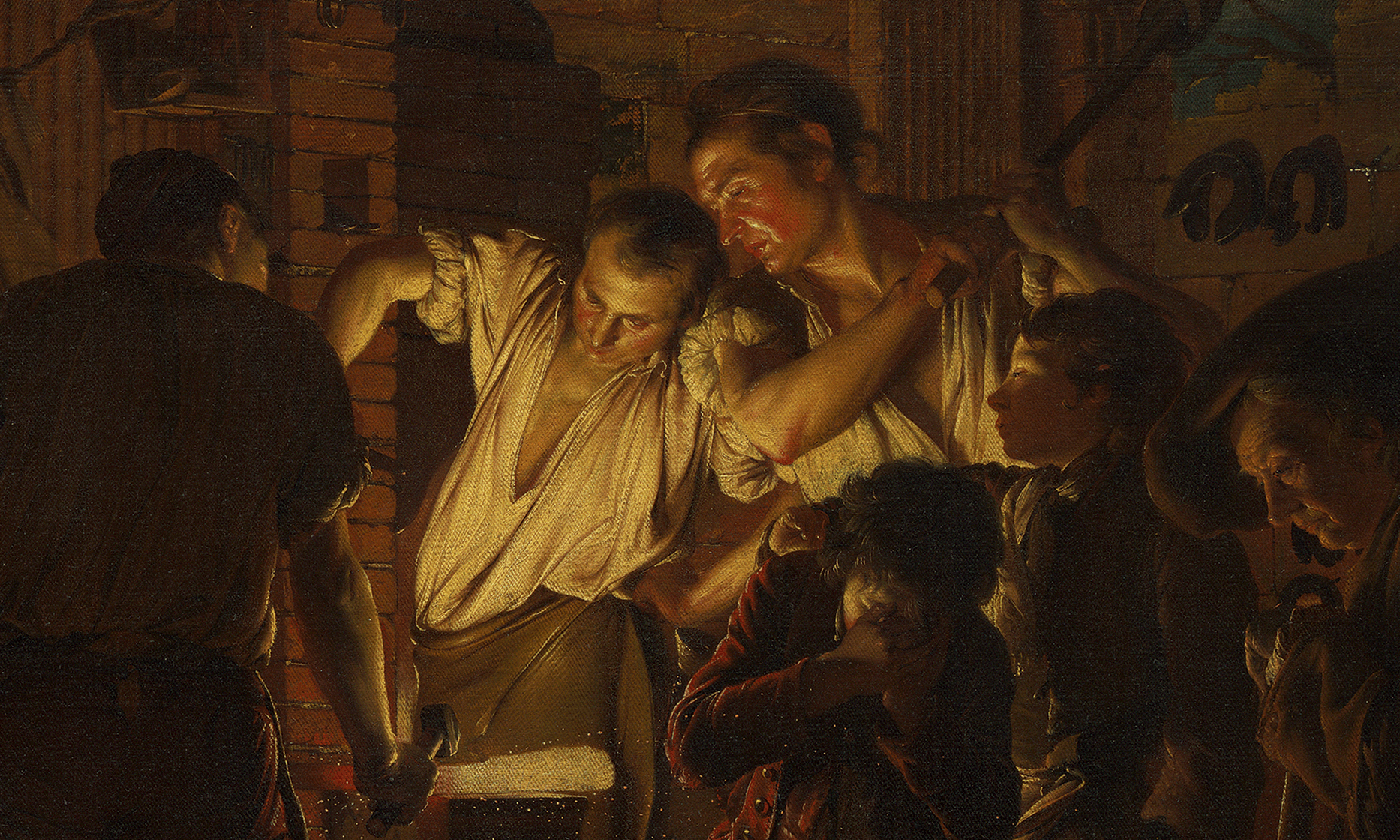What to do with the shadows? Detail of Joseph Wright of Derby’s The Blacksmith’s Shop (1771); the author checked a dozen proofs of the painting before being satisfied with the colour reproduction in The Invention of British Art
Yale Center for British Art, Paul Mellon Collection
Long-suffering Diary readers will know I have been writing a book. Four years, 200 illustrations, 400 pages, 1,400 endnotes and 120,000 words later, The Invention of British Art is finished. As I write, the first advance copy has arrived in the post, and looks better than I could ever have hoped. Writing may be a solitary act, but publishing is a team effort, and thanks to the talented people at Elliott & Thompson my unruly manuscript has become a beautiful book.
I didn’t expect it to be so big! With absurd pride I have even weighed it: 1.6kg. Still, I am relieved it is not bigger. The original plan was to write a fairly conventional and accessible survey of British art up to the present day. But I came to realise a far more interesting (and as yet untold) story was to be found in tracing the origins of British art, as I kept coming back to one central question: why did it take the British so long to become “good” at art? Wander round the National Gallery and the British School magically appears in the 18th century (and then vanishes). I have the answer now (no spoilers here), but I’ve in effect written two books to find it.
I concede that’s an inefficient way to write, but such is the lot of the empiricist. There was a moment of demented euphoria when I deleted tens of thousands of words and started again. The most useful part of my writing day was (and my apologies for this mental image) the morning shower, when I realised that everything I’d written the previous night was mostly rubbish, but at least I knew how to fix it. Fellow authors will know how a book can take over your life; mentally, it involves creating a parallel world which only you can inhabit until it is finished. The trick is not to get too drawn into that world. After multiple dreams about Anthony van Dyck, I knew it was time for a holiday.
Book production is fascinating; I’ve learned a great deal about colour proofing. You might think modern digital photography makes reproducing art much easier, but this is not always the case. To briefly get technical, the challenge is in converting the image from the three-colour process digital cameras use (“RGB”: red, green and blue) to the four-colour process printing presses use (“CMYK”: cyan, magenta, yellow and black). I have found that, for most artists, this conversion is relatively straightforward; a vibrant John Constable landscape (for example) requires little correction. But Joseph Wright of Derby almost defeated us, thanks to his complex use of darkness and shadow. We must have printed at least a dozen proofs of his The Blacksmith’s Shop (1771, Yale Center for British Art). In the book, I argued that Wright is one of the most talented figures in the story of British art. I took the difficulty of reproducing his work as an argument in favour of my thesis.
Dream subject: Anthony van Dyck’s 1640 self-portrait
National Portrait Gallery/RDK Images
So, the book is out, and now I just need to sell it. This, dear readers, is where you come in. I’ve managed to avoid a traditional book launch—I’m no good at parties, even my own—but by luck I have the Cheltenham Literature Festival as my first event. The capacity at the venue is 900, so you have no excuses. I’ll then be on a tour over the rest of the autumn.
• The Invention of British Art, published by Elliott & Thompson, is available from 10 October. Details of Bendor’s events can be found on X (formerly Twitter), @arthistorynews, or Instagram, @bendor_grosvenor

